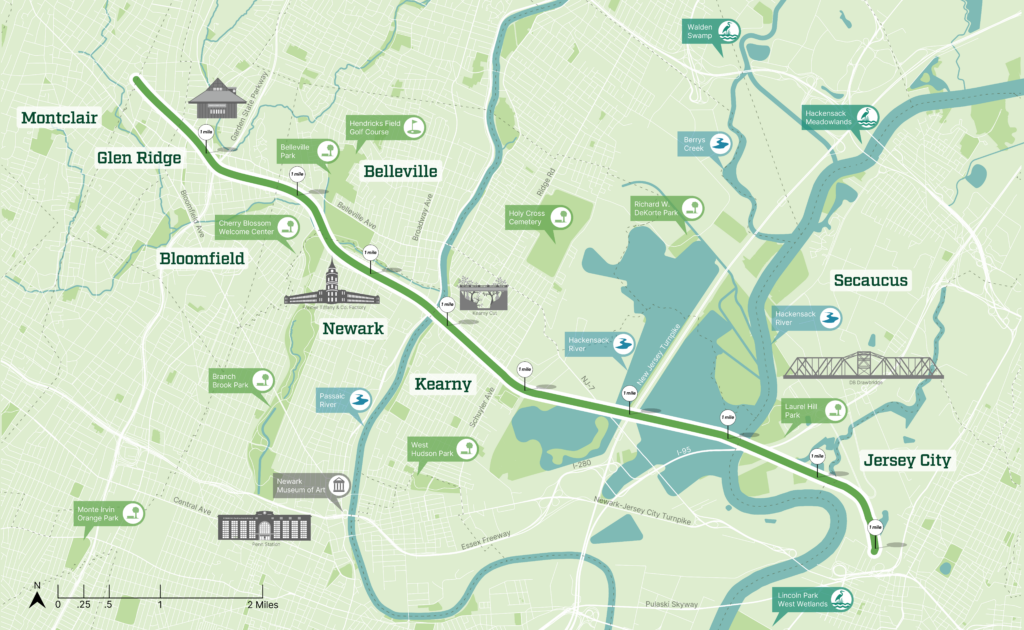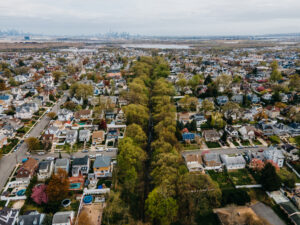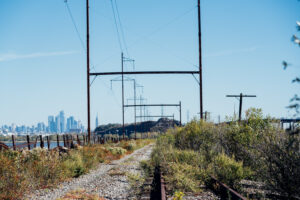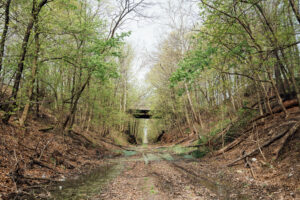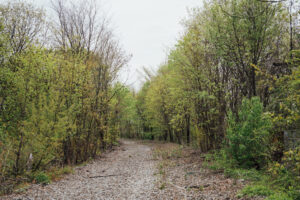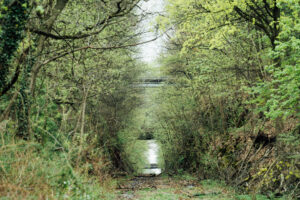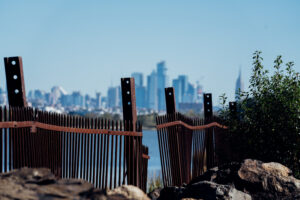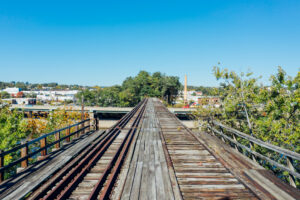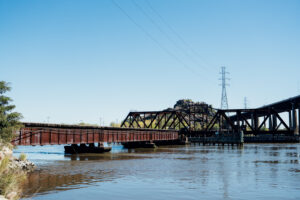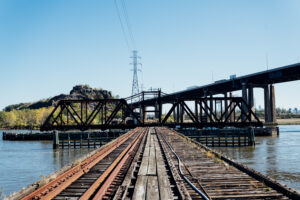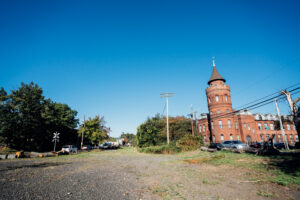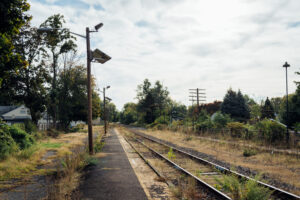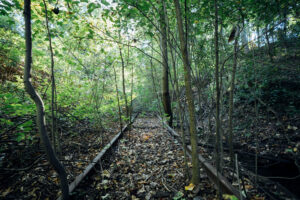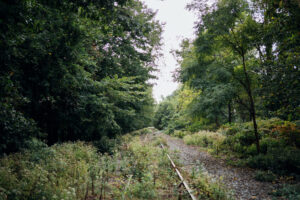
About The Greenway
DEP acquired the Greenway from Norfolk Southern on August 19, 2022. It is a nine-mile linear segment through Essex and Hudson Counties – through eight municipalities – Montclair, Glen Ridge, Bloomfield, Belleville, Newark, Kearny, Secaucus, and Jersey City.
The Greenway connects to approximately 1.5 million people – that’s over 16% of New Jersey’s population.
History
-
- 2 Million Years Ago
The rocks that the rail line cut through and travel over were formed by glaciers and rivers over the last 2 million years. Glaciers exposed bedrock and rivers cut valleys into the land. The Kearny Cut is one example of a ridge formed by glaciers. Workers removed a portion of the ridge to connect Northern New Jersey to the ports of New York.
-
- 1500s: Lenni-Lenape Communities
Lenni-Lenape people, of the Algonquian nation, inhabited small settlements across NJ for centuries, cultivating the land and hunting. Many names in the region – such as Passaic, Secaucus, Hackensack and Hoboken – derive from the language of the native inhabitants.
-
- 1800s: Rail Origins in Iron and Ice
The movement of raw goods and services to support manufacturing hubs are where our rail story begins! Ice produced on New Jersey’s abundance of lakes was moved along this route into major ports in Jersey City and New York City.
-
- 1878 – 1943: Many Rails Into One!
The New York and Greenwood Lake Railway provided service through the Erie Railroad, which stretched north and west from New York City. In 1887, the Erie Railroad created the Arlington Railroad to connect over the Kearny Meadows between the Hackensack River and Passaic River. The rail line expanded east into Jersey City in 1943. In 1960 the Erie merged with another rail line to the Hoboken Terminal via the Bergen Tunnels, connecting the rail between Jersey City, Boonton, and further west.
-
- 1976 to Today: A People Mover at its Core
The rail line carried commuters from 1976 to 2002, when operations discontinued because of low ridership. The New Jersey Department of Environmental Protection acquired the rail property from Norfolk Southern in 2022 to convert the corridor into a State park.
Photo Gallery
 OFFICIAL SITE OF THE STATE OF NEW JERSEY
OFFICIAL SITE OF THE STATE OF NEW JERSEY